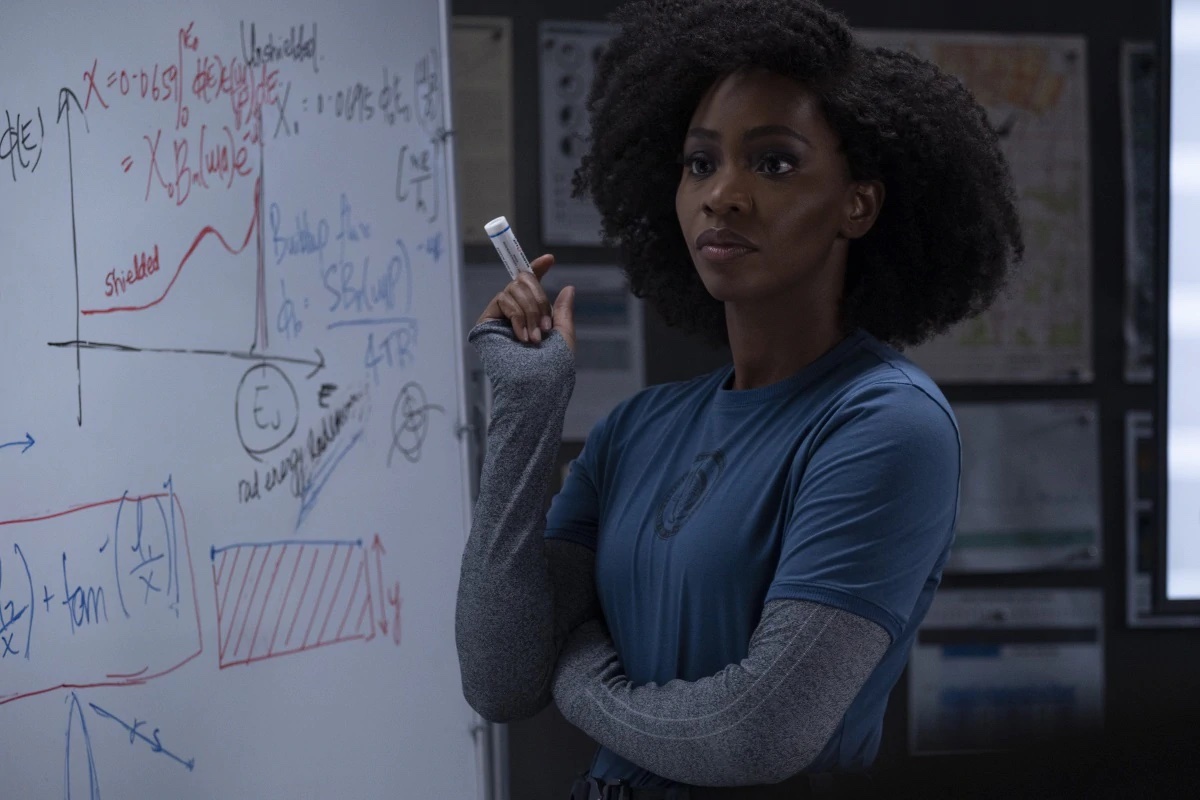How 'WandaVision' (and Monica Rambeau) deftly deal with Wanda Maximoff's breakdown
In a superhero world full of Tyler Haywards, be a Monica Rambeau.

This post contains spoilers for WandaVision on Disney+.
If the first four episodes of WandaVision weren’t enough indication that the writers not only understand Wanda Maximoff’s history, the fifth episode should make that unavoidably clear. They’ve taken the time to analyze it, break it down, and then synthesize it into the story of WandaVision.
Wanda Maximoff as a character has existed for almost 60 years, and a majority of that time, she’s been painted as a woman who has no control. Someone who viscerally reacts selfishly without any regard to anyone else. Wanda’s grief is usually used as more of a prop than anything.
Without going too deeply into Wanda Maximoff’s pre-retconned history, I’ll try to sum it up the best way I can. Wanda was a Romani mutant. In the Marvel universe, mutants experience a tremendous amount of othering. They are an imperfect analog to the plight of non-cishet white people. I say imperfect because the experiences are not homogenous across different groups. They vary, and it’s not fair to clump them together as if those experiences were not unique to each group. What they all share is the experience of various forms of oppression.
Keeping this in mind for a character like Wanda, imagine what happens when you mix in new trauma along with the trauma that already comes as being both a Romani person and a mutant. You get a character who knows almost nothing but pain because every time she thinks she’s gotten an ounce of what she feels is an everyday existence, it's ripped away.
But Wanda Maximoff, like any other superpowered human, is still human. That should be obvious, but it’s not because of the way we often think of superheroes. They aren’t without fault. They are capable of being just as messy as we are. There is no neat packaging for them. Nor should there. And if they harm others, to quickly dub them villains strips them of their humanity and is also counterproductive to some villains. This is not an excuse for harmful behavior but an understanding of why it happened and how help can be administered if any kind of transformative justice is possible. Good and bad are not one size fits all. Care must take place when telling these stories, especially in this genre.
MORE: Check out Disney+ on Apple TV
Also: Watch every Marvel movie in order
The latest updates, reviews and unmissable series to watch and more!
WandaVision is Avengers: Disassembled and House of M, but with care to her traumas and those affected by her actions due to the way she works through her traumas. In both those stories, Wanda is the victimizer, as S.W.O.R.D. Director Tyler Hayward so plainly states. His character in the WandaVision series is how people have often failed to understand her plight — or even care to understand it in the first place.
In the fifth episode, Captain Monica Rambeau is a very meta version of the writers' room and of those who can empathize with Wanda but still understand that what she is doing is harmful.
Captain Monica Rambeau can begin to empathize (and maybe even somewhat be sympathetic) with Wanda because of the trauma she experienced. Carol Danvers abruptly disappears from her life, comes back, then leaves again. Then Monica herself comes back from The Blip, and the other person she loved dearly — her mother and Danvers' friend Maria Rambeau — is gone. WandaVision also takes a brief moment to show Monica has some animosity towards Danvers. (Something I hope receives exploration in the upcoming Captain Marvel 2 movie.) WandaVision has taken the time to put some care into developing Monica’s story making the parallels between Monica and Wanda’s grief undoubtedly present. So, it makes perfect sense that Monica becomes the through-line to understanding Wanda’s breakdown.
Wanda doesn’t have any Monicas in Avengers: Disassembled or House of M. She just has a bunch of Tylers. Also, Monica’s presence in WandaVision so far has not just been in service to driving Wanda’s story forward in the same way that her mother, Maria Rambeau’s existence, was only used to move Carol Danvers' story forward. That matters immensely to both Monica and Wanda’s character development. It’s a testament to how WandaVision cares for women — with an emphasis on Black women — in ways that the MCU hasn’t had the best track record with outside of Black Panther.
WandaVision has made it clear there will be no writing Wanda off as some mad woman to be written off as she has been by her fellow Avengers both in the MCU and comics. The series is doing the best to tell such a delicate story with as much balance as possible. The way they explain what it feels like to be under Wanda’s influence alone has helped describe how deep her pain is, and how much she needs help. Hurt people, hurt people, it doesn’t make it right, but it’s an acknowledgment.
With only four episodes of WandaVision remaining, I’m looking forward to seeing how Vision’s role in Wanda’s breakdown continues to play out. He, too, deserves the same amount of care Wanda and Monica have received so far.


